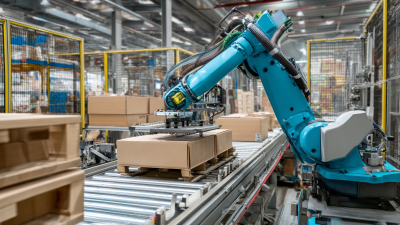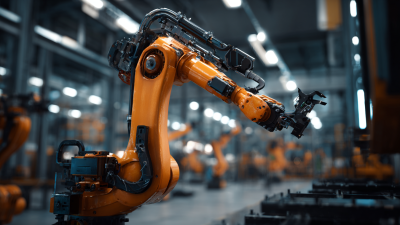- sale@instructrobot.com
- Dallas, TX , United States
In the rapidly evolving landscape of manufacturing and logistics, the role of automation has become increasingly pivotal. An industrial palletizing robot serves as a cornerstone for enhancing productivity and efficiency in various sectors. As noted by Dr. John Smith, a leading expert in robotics and automation, "The adoption of industrial palletizing robots not only streamlines operations but also significantly reduces the risk of workplace accidents." This statement underscores the transformative impact these robots have on optimizing workflow and ensuring safety in demanding environments.
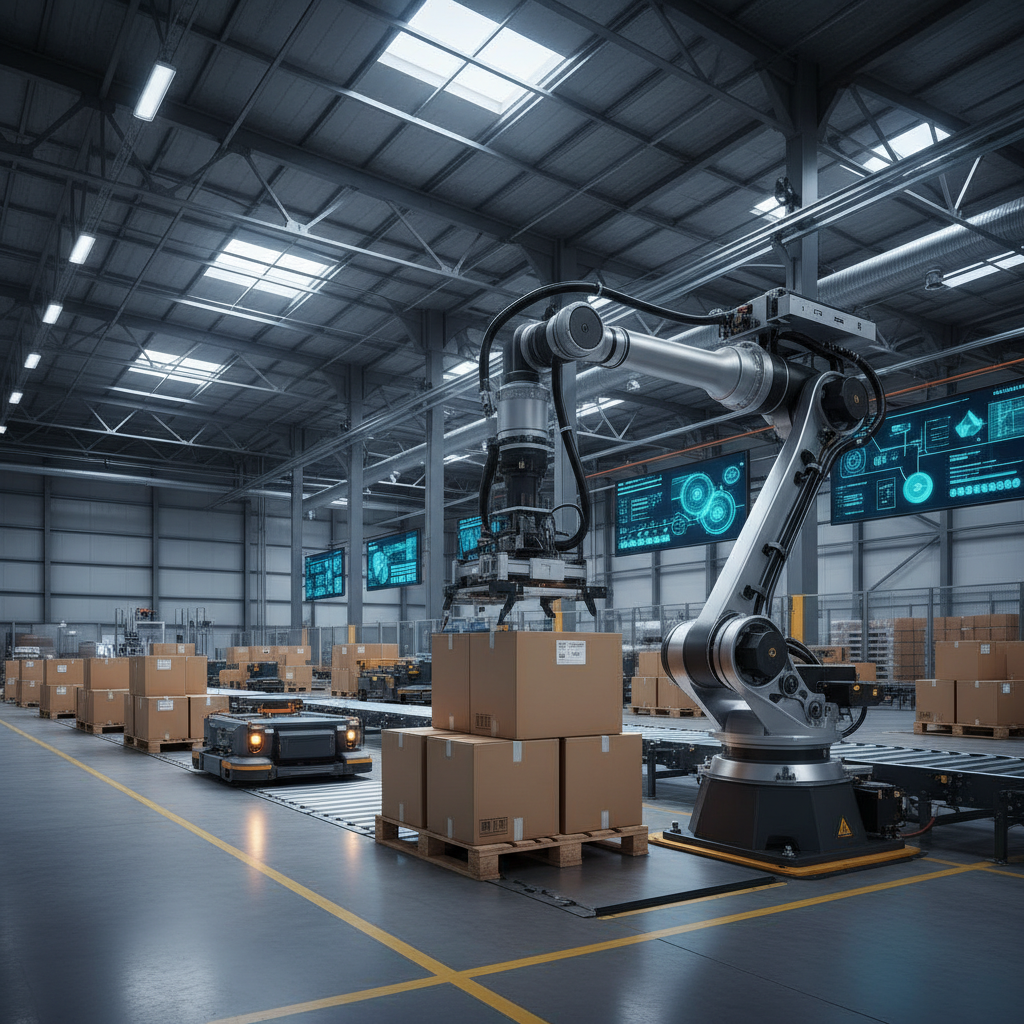
As companies strive to remain competitive, understanding the benefits, market trends, and key statistics surrounding industrial palletizing robots is paramount. These advanced robotic systems facilitate the precise stacking and organization of products, which is essential for effective supply chain management. Furthermore, with advancements in artificial intelligence and machine learning, the capabilities of industrial palletizing robots continue to expand, paving the way for smarter and more adaptable manufacturing processes.
In this article, we will delve into the intricacies of industrial palletizing robots, exploring the myriad advantages they offer, the current trends shaping the market, and the statistical data that highlights their significance in today's industrial landscape. Join us as we uncover how these technological marvels are reshaping the future of production and logistics.
Industrial palletizing robots are automated systems designed to handle the stacking and arrangement of products onto pallets for storage and transportation. These robots improve efficiency in manufacturing and warehouse operations by speeding up the palletizing process and reducing the risk of workplace injuries associated with manual handling. According to a report by Mordor Intelligence, the industrial palletizing market is expected to grow at a CAGR of 12.5% from 2021 to 2026, driven by the increasing demand for automation in various industries, including food and beverage, pharmaceuticals, and consumer goods.
These robots are equipped with advanced technologies such as vision systems, artificial intelligence (AI), and machine learning, which enable them to analyze and optimize pallet patterns for maximum space utilization. A study from ResearchAndMarkets indicates that the palletizing robot segment is anticipated to reach a value of over $6 billion by 2025, as businesses seek to enhance productivity and reduce costs. The integration of collaborative robots or cobots in palletizing lines further allows for safe human-robot interaction, promoting a more flexible and versatile working environment that can adapt to varying production demands.
In modern manufacturing, palletizing robots are becoming indispensable due to their numerous advantages. One of the primary benefits is increased efficiency. According to a report by Research and Markets, the global palletizing robot market is expected to grow at a CAGR of approximately 10.7% from 2021 to 2026. This growth is attributed to the robots' ability to work continuously without fatigue, drastically reducing the time required for the palletizing process.
Moreover, the implementation of palletizing robots leads to significant cost savings. A case study published by the International Federation of Robotics indicates that companies have reported up to a 30% reduction in operational costs after integrating robotic systems into their workflows. This is particularly crucial in an era where labor shortages are becoming increasingly prevalent in the manufacturing sector.
Tips: For manufacturers considering investment in palletizing robots, it's essential to assess the specific needs of your operation. Start by analyzing your current palletizing processes to identify inefficiencies. Additionally, invest in training programs to ensure that your workforce can effectively collaborate with these new robotic systems, maximizing productivity and innovation in your manufacturing processes.
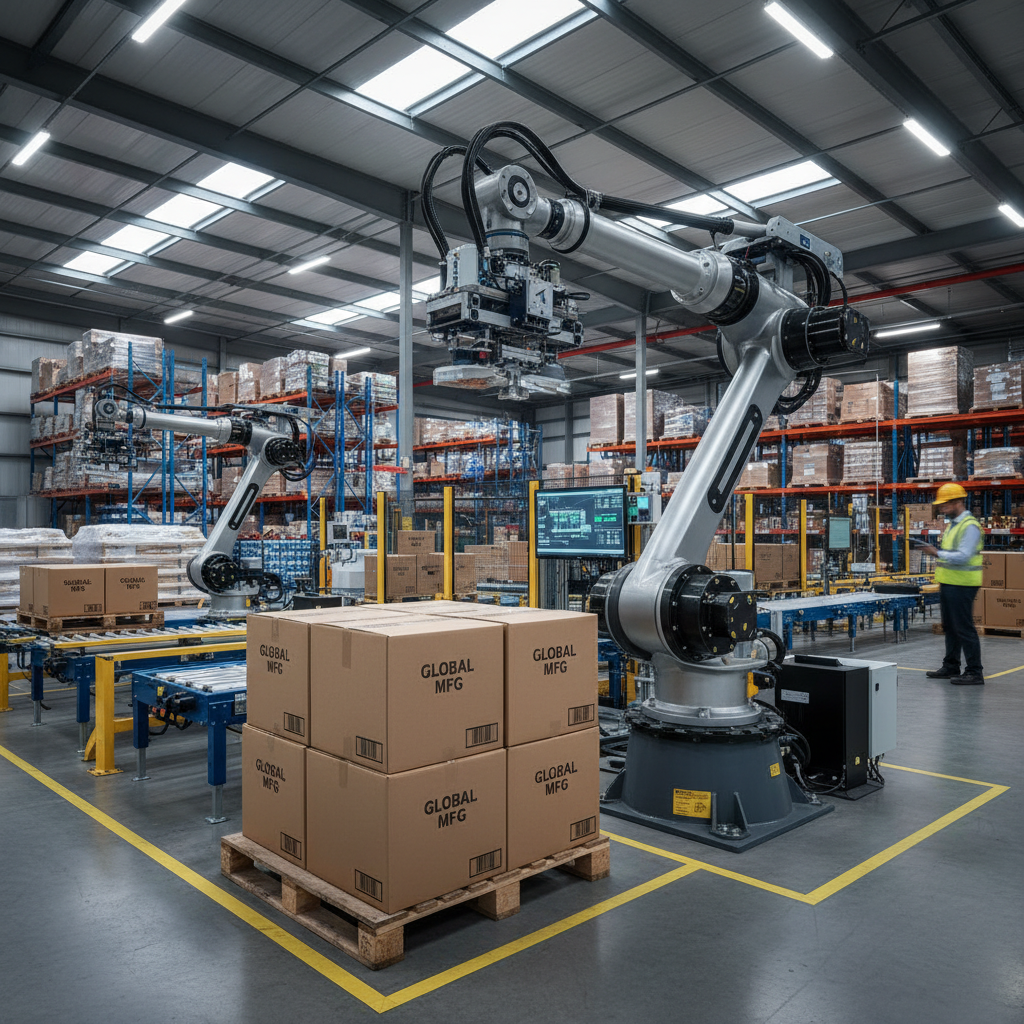 The market for industrial palletizing robots is experiencing significant growth, driven by several current trends. One of the primary influences is the increasing demand for automation in manufacturing and logistics. Companies are increasingly recognizing that palletizing robots enhance efficiency, reduce labor costs, and improve safety by minimizing manual handling. This shift toward automation is further fueled by advancements in technology, such as artificial intelligence and machine learning, allowing robots to perform more complex tasks with greater precision.
The market for industrial palletizing robots is experiencing significant growth, driven by several current trends. One of the primary influences is the increasing demand for automation in manufacturing and logistics. Companies are increasingly recognizing that palletizing robots enhance efficiency, reduce labor costs, and improve safety by minimizing manual handling. This shift toward automation is further fueled by advancements in technology, such as artificial intelligence and machine learning, allowing robots to perform more complex tasks with greater precision.
Tips: When considering the implementation of palletizing robots, it's essential to evaluate the specific needs of your operations. Assessing factors such as the size and weight of products, the type of packaging used, and the desired throughput can help in selecting the right robotic solution. Additionally, consider investing in training for your workforce to ensure a smooth integration of these automated systems.
Another trend influencing the growth of palletizing robots is the increasing need for flexibility in production lines. As consumer demands shift rapidly, manufacturers must adapt quickly to changing requirements. Modern palletizing robots can be easily programmed and reconfigured to handle various products and packaging styles, enabling companies to respond to market fluctuations effectively. This adaptability not only enhances operational efficiency but also provides a competitive edge in the fast-paced industrial landscape.
The industrial palletizing robot market has experienced significant growth in recent years, driven by the increasing demand for automation in various industries. According to a report by MarketsandMarkets, the global industrial robot market, which includes palletizing robots, is projected to reach USD 46.3 billion by 2026, growing at a compound annual growth rate (CAGR) of approximately 10.5% from 2021. This growth can be attributed to the need for more efficient, accurate, and cost-effective solutions in manufacturing and packaging processes.
Statistical insights reveal that the demand for robotic palletizers is particularly strong in sectors such as food and beverage, pharmaceuticals, and consumer goods. A study by Research and Markets highlights that the food and beverage sector alone accounted for over 30% of the industrial palletizing robot market share in 2022. Furthermore, the increasing focus on reducing labor costs and enhancing workplace safety has further accelerated the adoption of these advanced automated systems. With technological advancements in robotics, such as AI and machine learning integration, the market is expected to see even more innovative solutions that cater to the diverse needs of manufacturers.
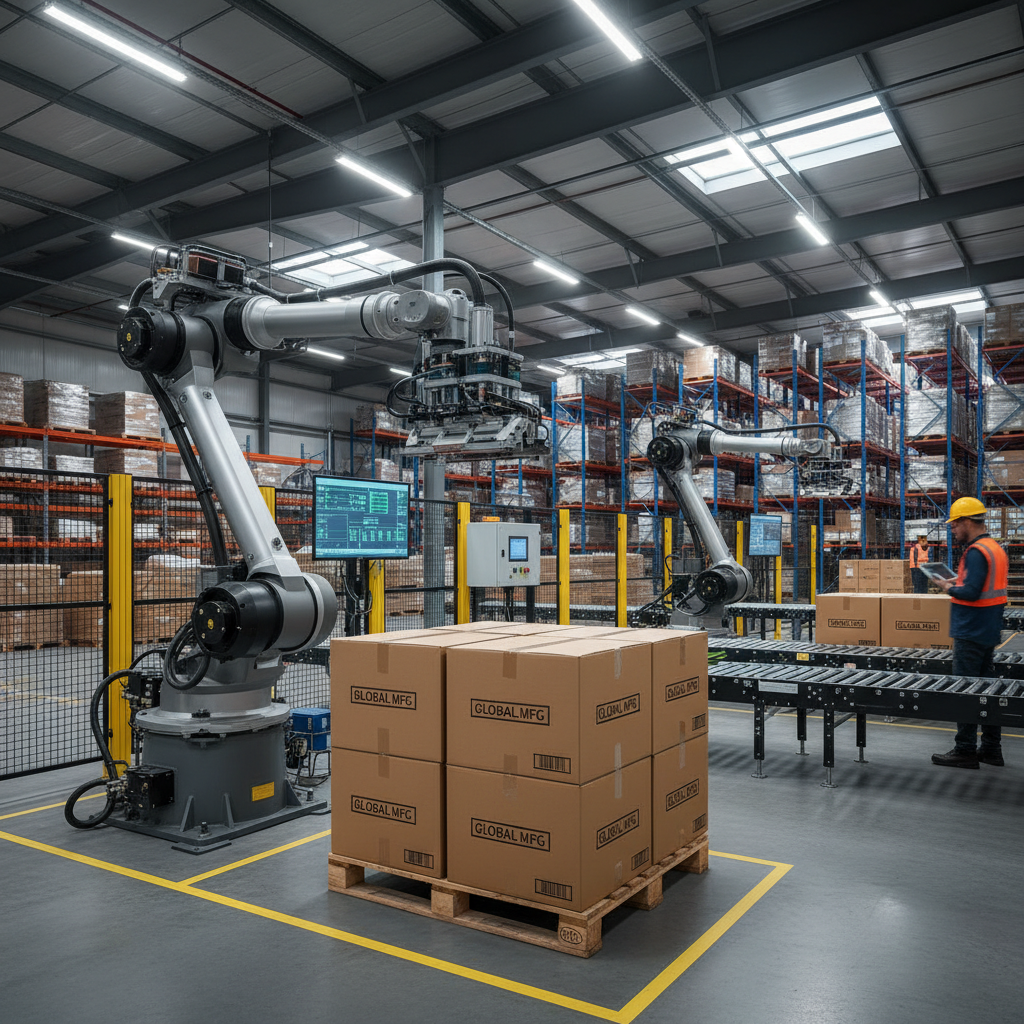
As we approach 2025, the palletizing robot market is set for significant transformation, fueled by advancements in artificial intelligence (AI) and automation technologies. The integration of AI not only enhances the efficiency and precision of industrial palletizing robots but also expands their capabilities to handle diverse products and complex tasks. This evolution is expected to drive heightened demand in sectors such as food and beverage, where automation is vital to maintain optimal productivity.
Key statistics indicate that the United States palletizer market is projected to grow from USD 0.4624 billion in 2024 to USD 0.656 billion by 2032, reflecting a compound annual growth rate (CAGR) of 5.7% during the period from 2025 to 2032. This growth trajectory highlights the increasing reliance on automated solutions within the warehousing and logistics sectors. As companies prioritize operational efficiency and cost reduction, the spotlight will be on the top ten palletizing robots emerging in the market, poised to redefine automation practices and set new standards by the end of 2025.

